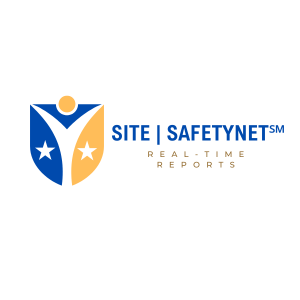 By Robert Jordan, Founder SITE|SAFETYNET℠
By Robert Jordan, Founder SITE|SAFETYNET℠
Ensuring safe and secure learning environments is a top priority for K-12 schools nationwide. While crime statistics are essential, the perception of safety is equally crucial. Campus police and security officers play a vital role in fostering this sense of security through everyday community interactions. Building trust through effective communication and strategic partnerships is essential for maintaining a safe campus environment.
The Role of Communication in Law Enforcement
The media often highlights law enforcement officers involved in forceful and sensational encounters, overshadowing the vast majority of routine and non-crisis interactions. These everyday interactions shape the community’s perception of law enforcement. For instance, traffic stops, domestic disturbances, and casual encounters in public places are common scenarios where officers interact with the community.
Officers need robust and practical communication skills to handle these situations constructively. A recent study highlighted that an officer’s initial approach and language set the tone for the encounter. Many negative law enforcement encounters stem from poor communication at the outset, underscoring the need for officers to possess solid communication skills before escalation.
The Importance of Pre-Escalation Training
Law enforcement training has traditionally focused on tactics, firearms, and de-escalation techniques. However, there is a critical gap in pre-escalation training, which focuses on preventing situations from escalating in the first place. Programs like “Socially Smart Officer” aim to fill this gap by equipping officers with essential communication skills to rebuild trust with the communities they serve.
At the upcoming Campus Safety Conference (CSC) 2024, experts will present “The Socially Smart Officer Breakthrough,” an interactive platform where police officers can hone crucial skills such as:
-
Self-Awareness: Recognizing personal biases and emotional triggers to ensure clear judgment.
-
Balanced Communication: Emphasizing respect, awareness, and effective communication in all interactions.
-
Empathy and Trust Building: Cultivating understanding and fostering trust-based relationships with students, faculty, and staff.
-
Situational Adaptability: Responding effectively to diverse situations while maintaining composure.
SITE|SAFETYNET℠’s Commitment to Law Enforcement Partnerships
At SITE|SAFETYNET℠, we understand the importance of collaboration with local law enforcement agencies. This is why the first tier in our three-level assessment and reassessment system is dedicated to Partnerships. The tragic event at Uvalde, TX, highlighted the critical need for strong alliances with local police to ensure swift and coordinated responses to emergencies.
By prioritizing police partnerships, we aim to create a seamless connection between campus safety officers and local law enforcement. This collaboration enhances the safety protocols and fosters a sense of trust and security within the campus community. Our approach includes regular joint training sessions, shared communication channels, and coordinated response strategies.
Building a Safe and Inclusive Campus Community
Creating a safe and inclusive campus environment requires more than just technical skills. Everyday, routine or high-pressure interactions are crucial in building trust and fostering a sense of security. An officer’s words can be more powerful than any firearm in creating a safe atmosphere. Poor communication can create tension and undermine safety, regardless of an officer’s technical proficiency.
Campus law enforcement agencies must prioritize interpersonal skills training to promote positive interactions and a safe learning environment. K-12 administrations should invest in programs that teach officers to be “Socially Smart Officers,” focusing on balanced communication, empathy, and situational adaptability.
Understanding Citizen Perceptions
Effective communication also involves understanding and interpreting verbal and non-verbal cues. By honing these skills, officers can address the underlying concerns that contribute to feelings of insecurity, improving the overall perception of campus safety. The “Socially Smart Officer” program equips officers with the tools to bridge the gap between law enforcement and the community, fostering trust and cooperation.
Through interactive learning, the program focuses on three core areas:
-
Attitude: Maintaining a professional and respectful demeanor.
-
Awareness: Accurately reading situations and people, with a heightened sensitivity to the campus environment.
-
Ability: Employing effective communication techniques, both verbal and non-verbal, to foster a sense of safety and inclusion.
By mastering these elements, campus officers can become effective communicators, bridging the gap between law enforcement and the communities they serve. The “Socially Smart Officer” program offers a pathway to a future of trust, cooperation, and a safer learning environment for all.
Conclusion
At SITE|SAFETYNET℠, practical communication skills, and strong law enforcement partnerships are paramount for campus safety officers. By investing in pre-escalation training and fostering a culture of empathy and respect, we can build safer and more inclusive learning environments. For more information and resources on enhancing campus safety, visit our OVERVIEW PAGE HERE!
Protecting Our Students, Inc.

